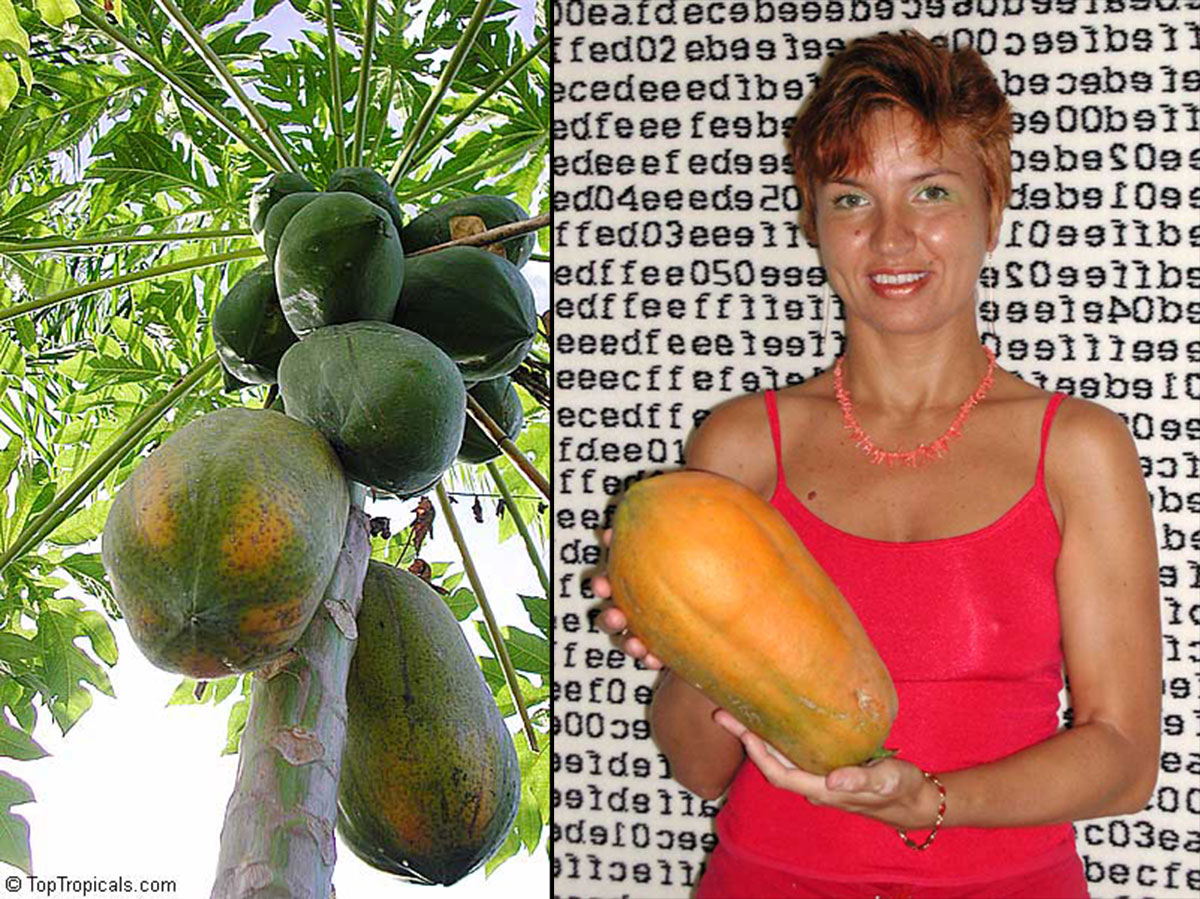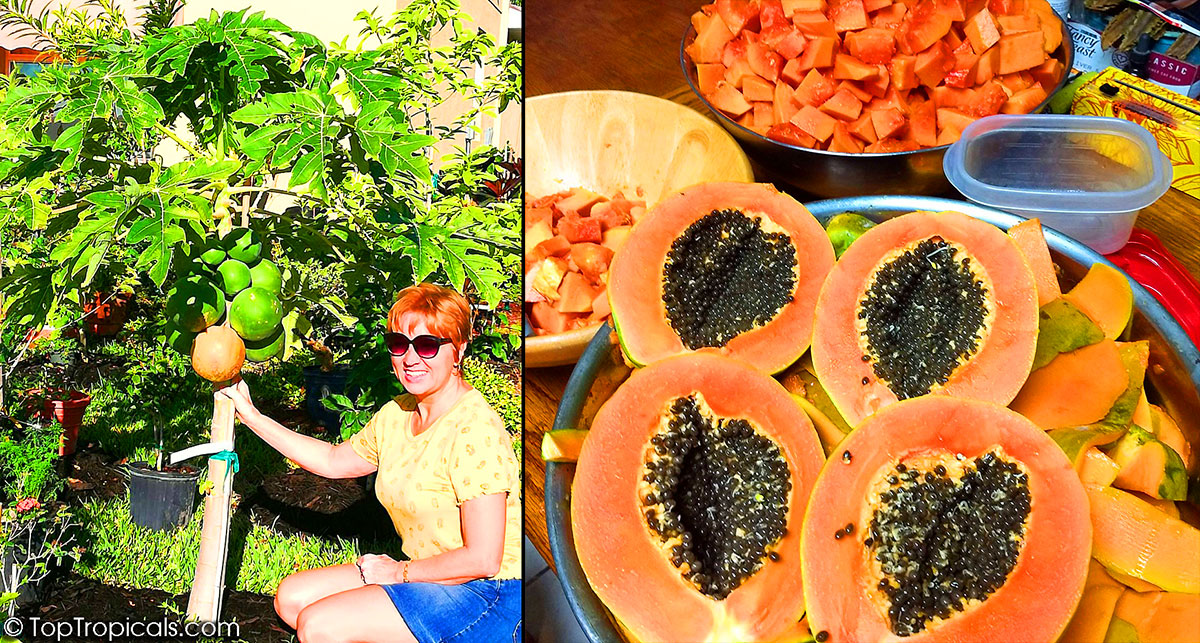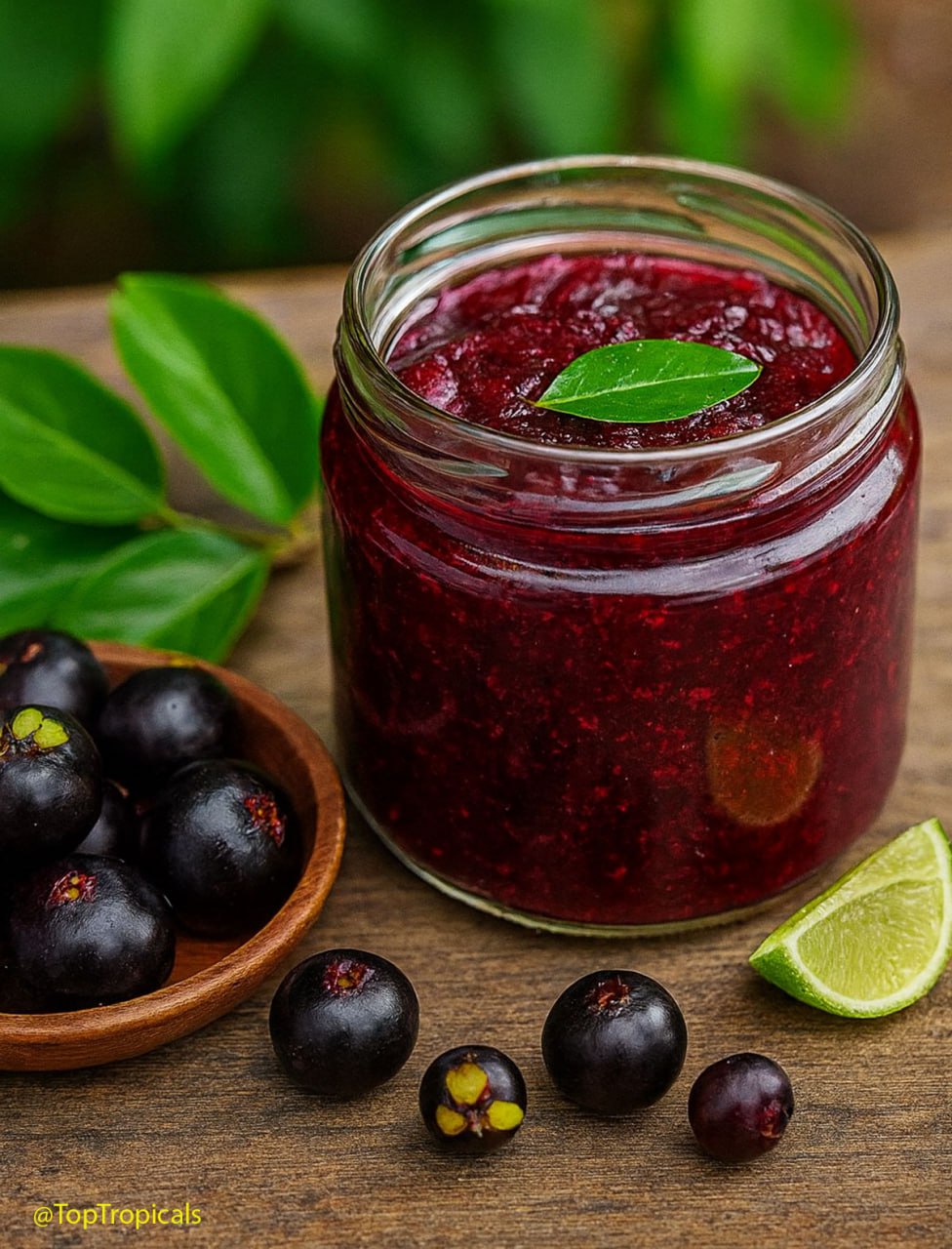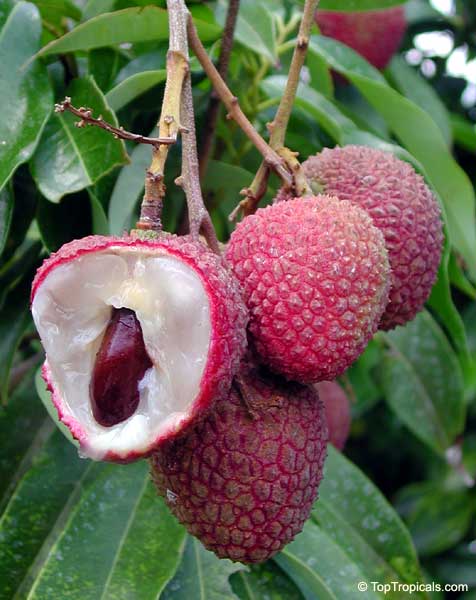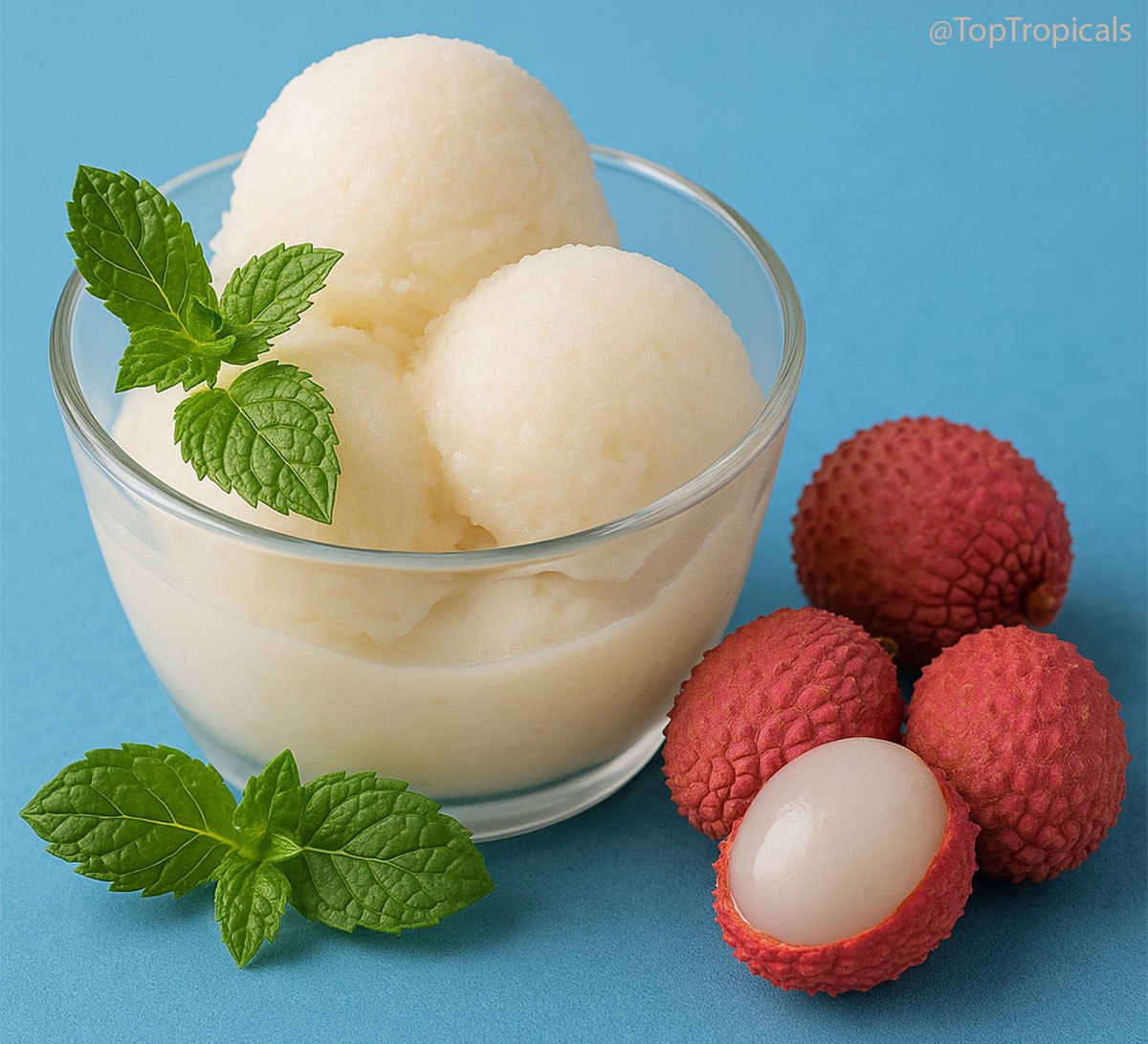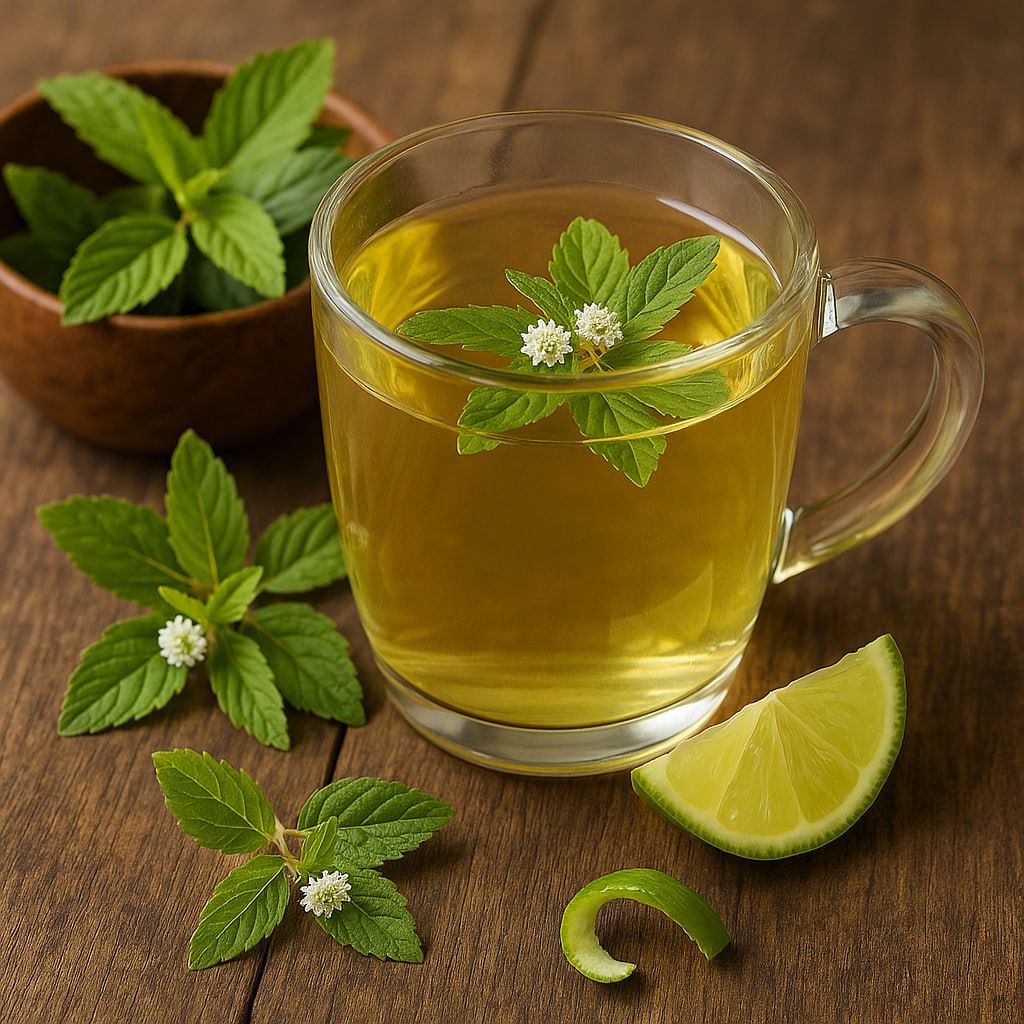Garden Blog - Top Tropicals
Fun Facts About the Guava Flower
Guava Flower
- 🌸 Frilly and Fabulous - Guava flowers may be small, but they're packed with fluffy white stamens that give them a soft, powder-puff look.
- 🌸 Pollinator Magnet - Bees and butterflies love guava blooms, making them a great addition to a pollinator-friendly garden.
- 🌸 Scent-sational - The flowers have a light, pleasant fragrance that adds a touch of sweetness before the fruit even arrives.
- 🌸 Bloom to Fruit - Each flower can turn into a delicious guava fruit, making them both beautiful and productive.
- 🌸 Part of the Showy Family - Guava (Psidium) belongs to the Myrtaceae family, which also includes eye-catching bloomers like Eucalyptus, Bottlebrush (Callistemon), and the stunning Rose Apple (Syzygium).
📚 More from previous posts about: #Guava
🛒 Shop Guava Trees
#Food_Forest #Guava #Fun_facts
🔴 Join 👉 TopTropicals
Fun Facts: Cacao beans
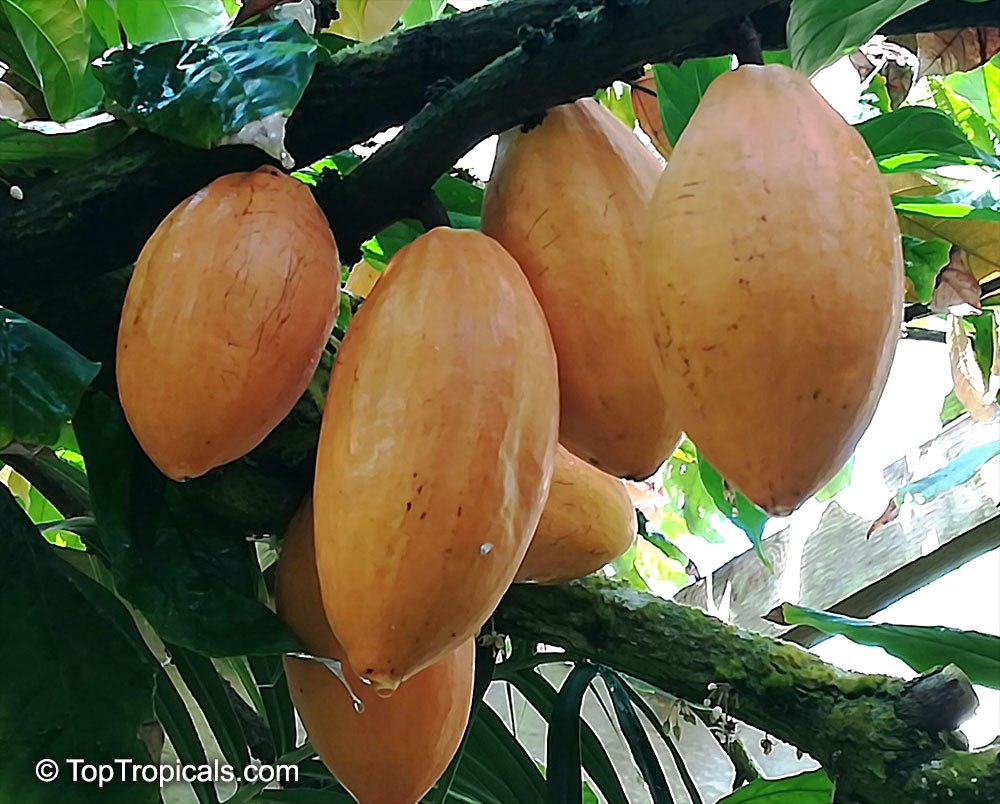
Cacao Chocolate Tree (Theobroma cacao)
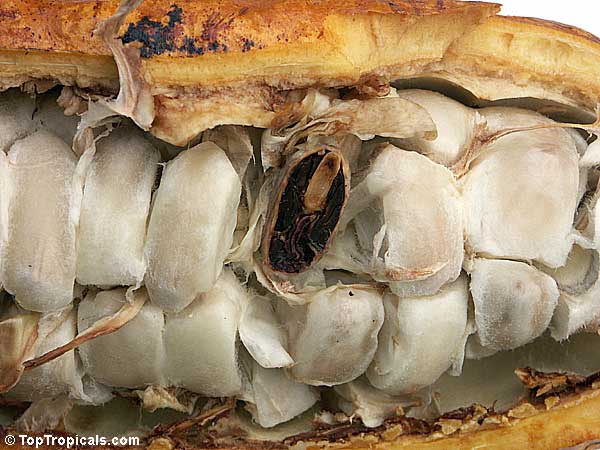
Cacao Chocolate Tree (Theobroma cacao)
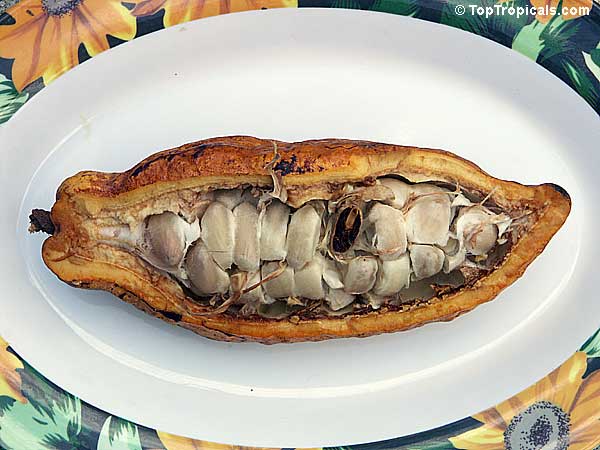
Cacao Chocolate Tree (Theobroma cacao)
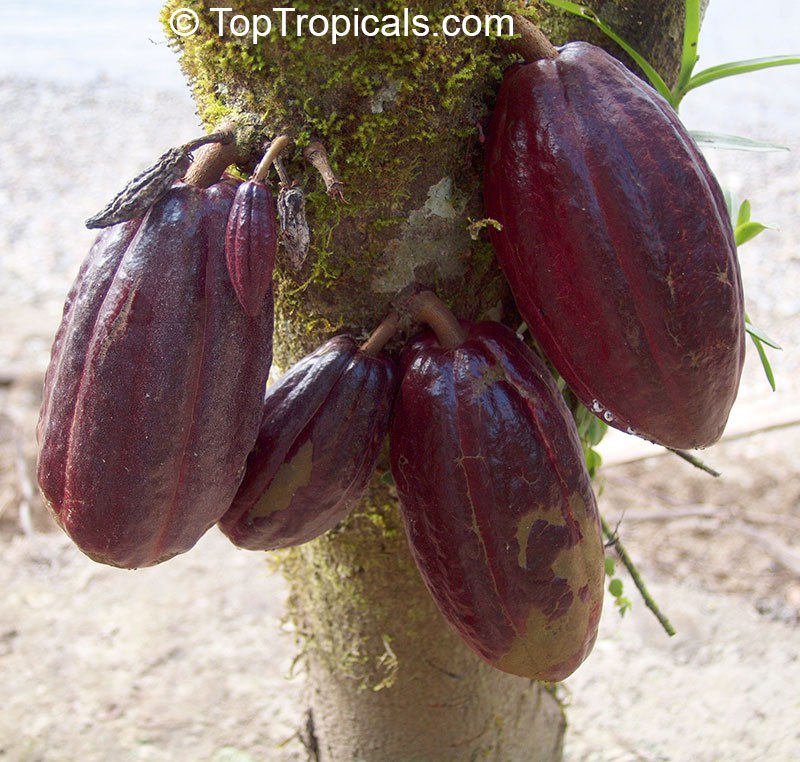
Cacao Chocolate Tree (Theobroma cacao)
🛒Get your own Chocolate Tree
#Fun_Facts #Food_Forest
JOIN 👉 @TopTropicals
Date:
Carefree
Garden:
How easy is it to grow a Papaya tree?
Q: What is the easiest to grow fruit tree? It must tolerate, heat, rains, and hurricanes! I live in Florida.
A: Papaya is the easiest to grow fruit tree. In our garden in Florida, newly planted Papaya trees survived several hurricanes, frosts, drought and heat, and keep producing year around!
We all enjoy eating Papaya fruit every day. It is great for digestion and is a perfect naturally sweet, healthy snack. Even our PeopleCats love Papaya. Check out this short video how our cat Cash is begging for his daily Papaya treat!
Why do we love Papaya? Fun facts about Papaya:
Not a tree: Papaya is technically a giant herb with a single, straight trunk that can grow up to 30 feet tall.
Gender flexible: Papaya plants can change their gender based on environmental conditions. This complex mechanism ensures better adaptability.
Cold and wind resistant: Papayas can withstand light freezes and strong winds, making them surprisingly hardy for a tropical plant.
Solo cultivars: These smaller, round or oval papayas are incredibly sweet and less susceptible to fruit flies.
How to grow a Papaya Tree: Practical Guide
Papaya is one of the fastest fruiting plants to grow. Often starting production the same year from planting a seed, papayas are ideal for gardeners seeking quick rewards. Many dwarf varieties reach only 6-8 feet tall, yet produce large crops of full-sized fruit that are easy to harvest. Papaya trees are space-efficient, making it possible to plant multiple trees in even small gardens. Plant 2-3 different cultivars to enjoy year-round harvests of healthy, delicious fruit.
How Easy Are Papaya Trees to Grow?
Papaya trees are exceptionally easy to grow. Technically a large herbaceous
plant rather than a true tree, they are resilient and adaptable. They can
tolerate light freezes and even hurricane winds without significant damage.
Additionally, many varieties are self-fertile, but planting multiple trees
encourages better pollination and higher yields.
What Light Levels and Soil Types Are Ideal?
Papayas thrive in full sunlight, so choose a sunny spot in your garden or
balcony. They prefer well-draining, fertile soil enriched with organic matter.
Add compost or manure to improve soil quality and ensure healthy growth.
Avoid waterlogged areas as papayas are sensitive to standing water.
How Much Watering Is Required?
Papayas need some watering to thrive, especially during the growing and
fruiting seasons. Water deeply once or twice a week, depending on your climate,
ensuring the soil remains moist but not waterlogged. Mulching around the base
helps retain moisture and regulate soil temperature.
Growing Papayas in Containers
Papayas can be successfully grown in large containers, making them ideal
for gardeners in cooler regions or those with limited space. Choose a container
at least 7 gallons in size with good drainage. Use a rich, well-draining
potting mix, and place the container in a sunny location. Select dwarf varieties
to keep the plant manageable and productive.
Health Benefits of Papaya
Papaya is considered a superfood due to its high nutritional value. Rich in
the enzyme papain, it aids digestion and promotes gut health. Papaya is also
an excellent source of vitamins A, C, and E, as well as antioxidants that
boost immunity and overall wellness. Additionally, papaya leaves can be used as
wraps for cooking meats, naturally tenderizing them.
Papayas are a low-maintenance, high-reward addition to a Southern garden or greenhouse collection, whether in the ground or in a container. Their fast growth, year-round fruiting potential, and health benefits make them a must-have for gardeners and fruit enthusiasts alike.
Photo above: For small gardens, limited space, or container culture, choose dwarf varieties that remain compact and short (5-8 ft tall) while producing a tremendous amount of fruit! Most productive dwarf varieties: Red Vietnam, Lady Red, TR Hovey, Wan Deng. Semi-dwarf: Waimanalo, Sunrise.
Date:
How to Live Longer? Surround Yourself with Plants!
Gardening not only helps you stay active and healthy but can also be a fun and rewarding way to extend your life. Let nature nurture you!
Living Longer with Green Spaces
A study by the Barcelona Institute for Global Health found that a 10% increase in vegetation within 1,600 feet of your home can lower your death risk by 4%.
Why Gardening Could Help You Live Longer
- Nature Exposure: Being outside boosts your mood.
- Exercise: Gardening is a great workout.
- Healthy Eating: Grow and eat your own fresh produce.
- Mind Exercise: Gardening can reduce stress and keep your mind sharp.
Gardening and Longevity
- Many centenarians (people living to 100) garden.
- In "blue zones," where people live longer, gardening is common.
- Gardening promotes daily exercise and a plant-based diet.
Natural Movement vs. Gym Workouts
- 100 years ago, 90% of jobs involved physical activity; today, only 10%
do.
- Walking 2 hours a week can lower the risk of major diseases.
- Gardening offers fresh air, exercise, and fun.
Gardening vs. Gym
- Gardening can be as effective as gym workouts.
- Research shows 3 hours of gardening equals a 1-hour gym session.
- Tasks like weeding, digging, and mowing burn significant calories.
Calories Burned in 1 Hour of Gardening
- 340 cal: Chopping wood, using power tools, tilling, mowing with a hand
mower, shoveling.
- 272 cal: Carrying wood, digging, clearing land, wheelbarrow work.
- 238 cal: Blower operation, planting, trimming, weeding.
- 224 cal: Raking and sacking leaves.
- 136 cal: Picking fruit, gathering tools, walking.
- 102 cal: Fertilizing or seeding a lawn.
- 34 cal: Watering plants.
Fun Facts
- Half an hour of weeding burns 150 calories.
- Gardening five hours a week burns 700 calories.
- Over a year, that's 20,000 calories, equivalent to running seven
marathons.
- A lifetime of gardening can burn a million calories.
Grumichama jam: quick-n-fun exotic recipes
🔴Cook Grumichama cherries with sugar and lime juice.- 🔴A deep red jam with a cherry-meets-blackberry flavor.
Grumichama Jam: Quick-n-Fun Exotic Recipes
Ingredients
- 2 cups fresh Grumichama cherries (Eugenia brasiliensis)
- 1 cup sugar
- 1 tbsp lime juice
Instructions
- Remove seeds from Grumichama cherries.
- Place fruit in a saucepan with sugar and lime juice.
- Simmer over low heat until thick and glossy, stirring often.
- Pour into sterilized jars and let cool before sealing.
🛒 Plant Grumichama tree (Eugenia brasiliensis)
📚 Learn more:
- ▫️The best tasting and most beautiful tropical cherry
- ▫️Why grow Grumichama? Benefits of Brazilian Eugenia Tree - Cherry of the Tropics
#Food_Forest #Recipes
🟢 Join 👉 TopTropicals
The hot Guyanese secret to perfect skin
Biquinho Pepper (Capsicum annuum x chinense) and Wiri Wiri Pepper (Capsicum frutescens)
- 🌶 Who said Peppers can't be cute? These two little fireballs prove otherwise! They might look small, but they’re full of personality, flavor, and heat.
- 🌶 Biquinho Pepper (Capsicum annuum x chinense)
- 🌶 Wiri Wiri Pepper (Capsicum frutescens)
- 🌶 Fun facts:
This heart-shaped hottie is an ancient hybrid between bird pepper and habanero is as beautiful as it is flavorful. Each tiny 1-inch red pepper packs a fruity, tangy punch with just enough heat to make your taste buds dance. Perfect for container gardens, Biquinho peppers decorate the plant like tiny red ornaments – and they’re just as tasty in pickles, salsas, or fresh salads.
From the kitchens of Guyana comes a true legend - the Wiri Wiri pepper. These little berry-shaped peppers turn from green to orange to bright red, bursting with intense heat and flavor. Guyanese chefs swear by it - it's the secret behind their famously spicy, flavorful dishes. Locals even say it’s the reason they live long, have glowing skin, and look amazing… it's not just spice, it's magic!
· Both peppers belong to the same botanical family as potatoes, tomatoes and eggplants.
- · What makes them special isn't just the heat - it's the flavor!
- · True pepper lovers know that great peppers are about depth, aroma, and the fruity fire they bring to every meal.
🌶 Growing tips:
Feed your peppers with Sunshine C-Cibus plant booster for abundant crops and extra flavorful fruits. These compact plants thrive in containers and bring tropical flair to patios, balconies, or edible gardens.
💥 These two peppers are a must for spice lovers - intense fruity habanero flavor packs quite a bang!
Extremely showy, these ornamental peppers have culinary benefits and are great for container garden.
🛒 Add the flavor of Hot Peppers to your garden and kitchen
📚 Learn more:
📱 How to grow the hot Wiri Wiri and Biquino Peppers
#Food_Forest #Container_Garden
🟢 Join 👉 TopTropicals
Lychee sorbet: quick-n-fun exotic recipes
- 🔴Blend Lychee pulp with lime juice, freeze until firm.
- 🔴A refreshing tropical ice treat.
Lychee Sorbet Recipe
Ingredients
- 3 cups fresh lychee flesh, peeled and seeded (or canned lychees, drained)
- 1/3 cup sugar or honey
- 2 tablespoons fresh lime juice
- 1/4 cup cold water, as needed for blending
- Fresh mint leaves for garnish (optional)
Instructions
- Prepare the lychees by peeling them, removing the seeds, and collecting the white flesh. If using canned lychees, drain them well.
- Place the lychee flesh, sugar or honey, lime juice, and 2 tablespoons of the cold water into a blender.
- Blend until completely smooth. If the mixture is too thick to move easily, add a little more water, 1 tablespoon at a time.
- Pour the mixture into a shallow freezer safe container. Cover tightly.
- Freeze for 2 to 3 hours, stirring with a fork every 30 to 45 minutes, until the sorbet is firm but scoopable.
- Scoop into bowls and garnish with fresh mint leaves and extra lychee fruit if desired. Serve immediately.
🛒 Plant your Lychee tree - Litchi chinensis
📚 Learn more:
- ▫️How long until I get fruit from my Lychee tree?
- ▫️Why I can't grow a Lychee tree from a seed?
- ▫️How to grow a Lychee tree and have a reliable crop. Practical Guide to Growing Lychee.
- ▫️What are the best varieties of Lychee Tree?
- ▫️What is the best fruit in the world? How to grow your own Lychee tree.
#Food_Forest #Recipes
🟢 Join 👉 TopTropicals
Secret Banana Daiquiri Recipe: Healthy Never Tasted So Good!
🍹 Banana Daiquiri Recipe Ingredients:
- · 1 ripe banana
- · 2 ounces light rum
- · 1 tablespoon sugar
- · 1 ounce lime juice
- · 1/2 ounce triple sec (optional for added depth)
- · Ice cubes
- · Slice of lime or banana for garnish
- 🍹Instructions:
- · Prepare the Banana: Peel the banana and cut it into chunks.
- · Blend the Ingredients: In a blender, combine the banana chunks, light rum, sugar, lime juice, and triple sec.
- · Add a handful of ice cubes. Blend on high until the mixture is smooth.
- · If the mixture is too thick, you can add a small amount of water or more lime juice to adjust the consistency.
🍹Garnish and Serve:
· Pour the mixture into a chilled glass. Garnish with a slice of lime on the rim of the glass or a small wheel of banana. Serve immediately and enjoy the refreshing tropical flavors!- · This Banana Daiquiri is not only refreshing but also offers a creamy texture and a perfect balance of sweetness and citrus. It's a fantastic choice for hot days or when you're in the mood for something a bit exotic. Cheers!
📚 About Banana from previous posts:
- 💋Top Ornamental Banana Varieties - Which One Belongs in Your Garden?
- 💋Best Edible Bananas to Grow - Sweet, Unique, and Delicious!
- 💋How Many Banana Varieties Can You Grow? (More Than You Think!)
- 💋Top 10 fruit you'll ever need for your health benefits: #5 Banana growing and fun facts
- 💋How to make tasty Carambola Banana Whip
- 💋Why Bananas? They are good for you and are fun to grow
- 💋Bananas help you feel fuller and enhance your mood
🛒 Banana Bliss Starts Here
#Food_Forest #Recipes
🔴 Join 👉 TopTropicals
How many varieties of Bananas can I grow?
Bananas (Musa sp.) in containers
- 💛 At Top Tropicals, we have a few dozen varieties of Bananas (Musa sp.) - ranging from popular commercial and plantain types to spectacular ornamental bananas with colorful, tropical foliage.
- 💛 Banana plants are a favorite in Southern gardens, indoor plant collections, and greenhouses in cooler climates. Fast and easy to grow, they transform any space into a tropical paradise in just one season and can produce fruit for you in as little as 8–18 months after planting.
- 💛 Bananas are a powerhouse of nutrition, packed with potassium for heart health, fiber for digestion, and vitamins B6 and C for immunity. They’re a natural energy booster, great for snacks, smoothies, and even baking. Plus, their tryptophan content can improve your mood, and their low sodium helps regulate blood pressure.
- 💛 With so many delicious and unique varieties, growing different types of bananas lets you enjoy a range of flavors, textures, and uses - whether fresh, blended, or cooked - making them a must-have in any tropical or indoor garden!
Discover the most popular edible and ornamental bananas in our next post 🔽
🎥 Banana selection today at TopTropicals farm. Come over to pick the best one!
📚 More about Banana from previous posts:
- 💋Top 10 fruit you'll ever need for your health benefits: #5 Banana growing and fun facts
- 💋How to make tasty Carambola Banana Whip
- 💋Why Bananas? They are good for you and are fun to grow
- 💋Bananas help you feel fuller and enhance your mood
🛍 Shop Banana varieties
#Food_Forest #Bananas
🔴 Join 👉 TopTropicals
Sweetleaf tea: quick-n-fun exotic recipes
- 🟢Delicious Sweetleaf tea can be made with Mexican Aztec sweet herb (Lippia dulcis).
- 🟢Steep Aztec sweet herb leaves in hot water with lime peel.
- 🟢Naturally sweet, no sugar needed!
- Fresh or dried Aztec sweet herb (Lippia dulcis) leaves
- Hot water
- Lime peel or a slice of lime
- Bring water to a boil and pour over Lippia dulcis leaves.
- Add lime peel or a slice of lime.
- Let steep for 5–10 minutes.
- Enjoy this naturally sweet tea—no sugar needed!
Sweetleaf tea: quick-n-fun
Ingredients
Instructions
🛒 Add sugar-free Mexican Sweetleaf (Lippia dulcis) to your herb garden
#Food_Forest #Recipes
🟢 Join 👉 TopTropicals


